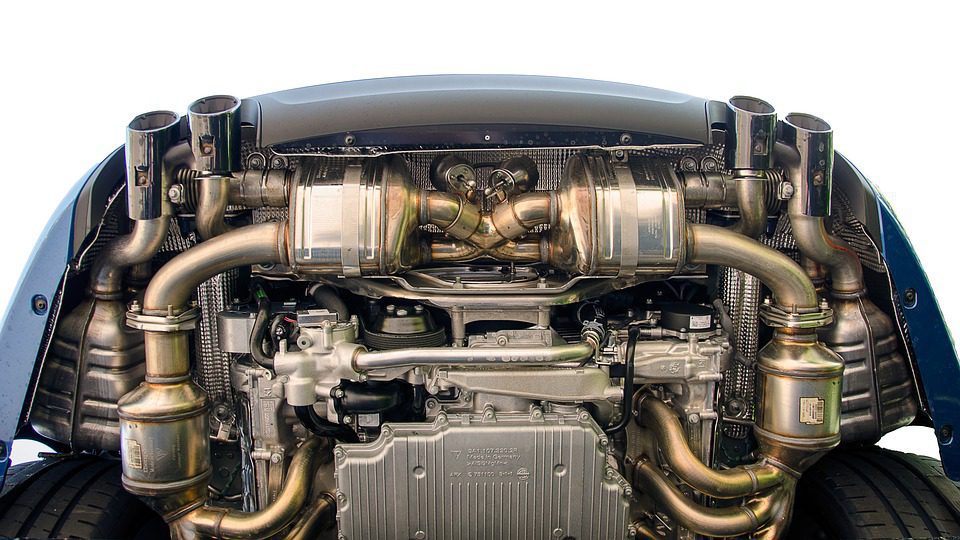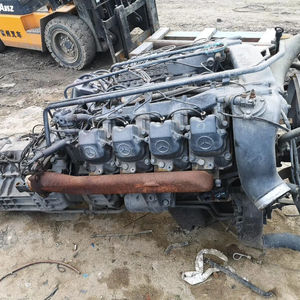Exactly how to Pick the Right Opel Corsa Engine for Your Car
Exactly how to Pick the Right Opel Corsa Engine for Your Car
Blog Article
Exploring the Inner Functions of a Compact Automobile's Engine System
As drivers, we often take for provided the detailed processes that occur within the confines of our lorry's engine system. The compact yet intricate equipment that drives us ahead is a wonder of engineering accuracy and sychronisation. From the controlled explosions in the combustion chamber to the precise timing of gas shot, every component plays a critical duty in the smooth procedure of the engine. In this exploration of a portable car's engine system, we will certainly decipher the inner workings of this mechanical harmony, clarifying the secrets that drive us ahead on our everyday trips.
Combustion Process Overview
The combustion process in a portable vehicle's engine system is an important mechanism that successfully converts gas right into power to power the automobile. This procedure takes place within the combustion chamber of the engine, where fuel and air mix, ignite, and generate controlled explosions. The burning process includes four main phases: consumption, exhaust, power, and compression.
Throughout the intake stage, the piston moves downward, attracting in a mixture of air and fuel into the burning chamber. This descending movement produces the power needed to drive the automobile. This cyclic burning process is fundamental to the operation of a small vehicle's engine system, guaranteeing reliable power conversion for propulsion.
Piston and Cylinder Interaction

The piston's precise fit within the cylinder is vital for preserving optimal compression and preventing power loss throughout combustion. Limited clearances between the piston and cylinder wall surfaces make sure efficient securing, enabling the piston to move efficiently without allowing gases to leakage past. Correct lubrication is likewise crucial to decrease rubbing and use between these parts, improving longevity and efficiency.
Moreover, the style and products utilized in manufacturing the piston and cyndrical tube impact engine performance and durability. Modern engines usually utilize light-weight yet long lasting materials like light weight aluminum alloys for pistons and cylinder linings to reduce inertia and improve thermal efficiency. On the whole, the harmonious communication between the piston and cylinder is basic to the engine's performance and total performance.
Gas Injection System Performance
Gas injection systems in small lorry engines play a vital duty in precisely providing gas to the combustion chamber for effective and regulated ignition. The fuel shot system operates by injecting fuel right into the burning chamber at the optimal moment during the engine's procedure (opel corsa engine). This specific timing guarantees that the fuel blends equally with the air for proper combustion, causing boosted gas performance and decreased discharges
There are mostly 2 kinds of gas shot systems used in compact car engines: port fuel injection (PFI) and direct fuel injection (DFI) PFI systems inject fuel into the intake port before the intake valve, while DFI systems infuse gas straight right into the combustion chamber. Both systems have their benefits, with DFI offering better fuel atomization and PFI supplying a more cost-efficient remedy.
Comprehending Engine Cooling Systems
Effective operation of a small car's engine relies heavily on the effectiveness of its cooling mechanisms. Engine air conditioning is necessary to prevent getting too hot, which can bring about significant damages and reduced performance. The air conditioning system in a portable automobile normally is composed of a number of components interacting to control the engine temperature. One crucial component is the radiator, which utilizes coolant to absorb warm from the engine. As the hot coolant moves with the radiator, it releases warmth right into the air, cooling down prior to going back to the engine. The water pump circulates the coolant via the engine and radiator, making certain a constant flow to manage temperature. Additionally, the thermostat assists control the coolant circulation to maintain ideal engine temperature. Some lorries likewise have cooling down fans that turn on when additional air conditioning is needed, such as throughout rush hour or warm weather condition. Understanding these engine air conditioning mechanisms is crucial for maintaining the efficiency and longevity of a small lorry's engine system.

Exhaust System Components Explained
The ideal performance of a portable lorry's engine air conditioning mechanisms depends on a complementary system called the exhaust system, which makes up numerous crucial components for guaranteeing efficient exhausts and engine performance. The exhaust system includes parts such as the exhaust manifold, catalytic converter, muffler, and tailpipe. The exhaust manifold collects exhaust gases from the engine's cylinders and paths them to the catalytic converter. The catalytic converter then converts damaging contaminants in the exhaust into less hazardous discharges before releasing them through the muffler and tailpipe.
One crucial part of the exhaust system is you can try here the oxygen sensing unit, which keeps track of the oxygen levels in the exhaust gases to aid control fuel intake and make certain optimal engine efficiency. opel corsa engine. Furthermore, the resonator may be present in some exhaust systems to lower noise degrees. Generally, the exhaust system plays an important duty in preserving engine efficiency, lowering damaging emissions, and making certain a quieter driving experience for small lorry owners

Verdict
In final thought, the portable car's engine system is an intricate combination of elements that collaborate to promote the combustion process, transform fuel into power, and expel waste gases. Comprehending the internal workings of the engine system, including the piston and cyndrical tube communication, fuel injection system, engine air conditioning mechanisms, and exhaust system elements, is crucial for preserving ideal efficiency and efficiency of the car.
The burning procedure in a compact car's engine system is a critical mechanism that effectively transforms gas right into energy to power the car.Gas shot systems here are the findings in portable vehicle engines play a vital function in specifically supplying gas to the burning chamber for regulated and efficient ignition.There are primarily two types of fuel injection systems used in compact car engines: port fuel injection have a peek at these guys (PFI) and direct fuel injection (DFI) Understanding these engine cooling mechanisms is vital for keeping the efficiency and durability of a small lorry's engine system.
The optimum performance of a compact lorry's engine cooling devices depends on a corresponding system recognized as the exhaust system, which consists of numerous crucial parts for making certain reliable discharges and engine performance.
Report this page